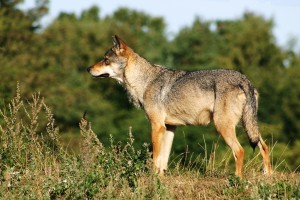Grey wolves are the largest species of the Canidae family and survivors of the Ice Age era originating during Late Pleistocene 300,000 years ago. They are considered apex predators, meaning that they do not contain predators of their own. They lived in much of Eurasia and North America until they were annihilated due to human hunting. Human hunting of grey wolves is considered both sport and extermination because of threats to livestock and people.

Grey Wolves are sexually dimorphic in terms of weight and their physique. Males usually weigh around 79 pounds on average while females typically weigh 20% less with narrower muzzles, foreheads, and less massive shoulders. Grey wolves rely on their endurance rather than their speed. They can trot at speeds of up to six miles per hour and reach a maximum speed of 40 miles per hour during a chase. Their paws are designed to tread easily in snow and other terrains. Their front paws are much larger in proportion to their hind paws and each toe contains slight webbing. They also contain scent glands, which leave other wolves aware of its presence. Wolves begin to mate between the months of January and April. A male may mate with one or more of its subordinate females unless there is one of his same hierarchy. After a gestation period of 60 days, an average of 5 to 6 pups are born usually deaf, blind, and completely dependent on their mother. For two weeks they consume milk from their mother and afterwards they begin to eat regurgitated food. After two months they escape from their dens and explore their environment up to a mile away. Eventually they are introduced to the pack.
Did you know? A pack of wolves can range from 2 to up to 20 members.







